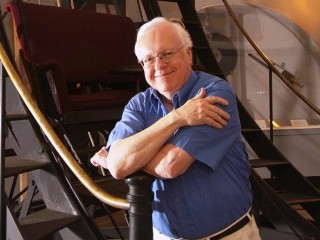
Brian Marsden biography
Date of birth : 1937-08-05
Date of death : 2010-11-18
Birthplace : Cambridge, England
Nationality : British
Category : Arhitecture and Engineering
Last modified : 2024-08-05
Credited as : Astronomer, Minor Planet Center, Smithsonian Astrophysical Observatory, celestial mechanics, International Astronomical Union Circular, comets, asteroids, near-Earth objects, comet Swift-Tuttle, Pluto reclassification, Spaceguard Foundation
1 votes so far
Brian Geoffrey Marsden: A Pioneer in Celestial Mechanics
Brian Geoffrey Marsden was a British astronomer born in Cambridge, England, and educated at The Perse School in Cambridge, New College, Oxford and Yale University. Dr. Marsden was the longtime director of the Minor Planet Center (MPC) at the Harvard-Smithsonian Center for Astrophysics (director emeritus from 2006 to 2010).
Early Life and Education
Brian Geoffrey Marsden was born in Cambridge, England, in August 1937. His early education was at The Perse School in Cambridge, followed by New College, Oxford, where he completed his undergraduate studies. Marsden's passion for astronomy and celestial mechanics led him to Yale University for graduate work, where he specialized in the orbits of celestial bodies. He completed his Ph.D. in 1965 with a dissertation on the orbits of the Galilean satellites of Jupiter.
Career Beginnings and Rise to Prominence
Marsden's fascination with celestial mechanics began early. While still in high school, he developed expertise in calculating the initial orbits of newly discovered comets. His proficiency in this complex task set him apart as one of the few people worldwide capable of such detailed calculations. A member of the British Astronomical Association recognized Marsden's talent and lent him a large mechanical calculator, allowing him to hone his skills further.
In 1965, Marsden accepted a position at the Smithsonian Astrophysical Observatory (SAO) in Cambridge, Massachusetts, a leading center for celestial research affiliated with Harvard University. This move coincided with the SAO becoming the new home of the Central Bureau for Astronomical Telegrams (CBAT), a research clearinghouse previously based in Copenhagen. Marsden became head of CBAT in 1968, marking the beginning of his influential role in astronomical discovery and communication.
Leadership at the Minor Planet Center
In 1978, Marsden also became the director of the Minor Planet Center (MPC), which had moved to Cambridge from Cincinnati. Under his leadership, the MPC cataloged discoveries and observations of small orbiting bodies such as asteroids and comets. Marsden's office published the International Astronomical Union (IAU) Circular, an official list of celestial discoveries, providing vital information to both amateur astronomers and major observatories worldwide.
Notable Discoveries and Contributions
Marsden gained international attention in 1998 when he warned that a newly discovered asteroid, 1997 XF11, might come dangerously close to Earth in 2028. His initial calculations sparked global concern, but within 24 hours, additional data allowed Marsden to revise his prediction, showing the asteroid would safely pass by. This incident highlighted the critical role of Marsden's work in monitoring and disseminating information about near-Earth objects (NEOs).
Marsden's interest extended to rediscovering "lost" comets and conducting a comprehensive inventory of the solar system. He predicted the return of comet Swift-Tuttle in 1992, which had last been observed in 1862. In the 1980s, he also became known for his stance that Pluto should be reclassified as an asteroid, a controversial position at the time but one that reflected his commitment to accurate celestial classification.
Impact and Legacy
Marsden's work at the MPC and CBAT functioned as the breaking news service for celestial events, verifying and publicizing new discoveries. His ability to handle potential crises, such as the 1998 asteroid prediction, demonstrated his expertise and dedication. His efforts brought attention and funding to the field of NEO research, with organizations like the Spaceguard Foundation focusing on identifying potential threats to Earth.
Despite his demanding role and small staff, Marsden remained committed to his work well into his sixties. His colleagues doubted he was ready for retirement, recognizing his unparalleled skill and the crucial nature of his position. Marsden advocated for increased funding for telescopes to detect smaller NEOs and for developing strategies to address potential celestial threats, famously stating, "we have to do more than the dinosaurs."
Awards and Honors of astronomer Brian Marsden:
Marsden's contributions to astronomy were widely recognized with numerous awards:
Merlin Medal and Gift of the British Astronomical Association (1965)
Walter Goodacre Medal of the British Astronomical Association (1979)
George Van Biesbroeck Prize of the American Astronomical Society (1989)
Brouwer Award of the Division on Dynamical Astronomy of the American Astronomical Society (1995)
Royal Astronomical Society Award for Service to Astronomy and Geophysics (2006)
Member of the Norwegian Academy of Science and Letters
Conclusion
Brian Geoffrey Marsden's pioneering work in celestial mechanics and his leadership at the MPC and CBAT have left an indelible mark on the field of astronomy. His dedication to cataloging and predicting the movements of celestial bodies has advanced our understanding of the solar system and safeguarded our planet from potential threats. Marsden's legacy continues to inspire astronomers and researchers worldwide.
















